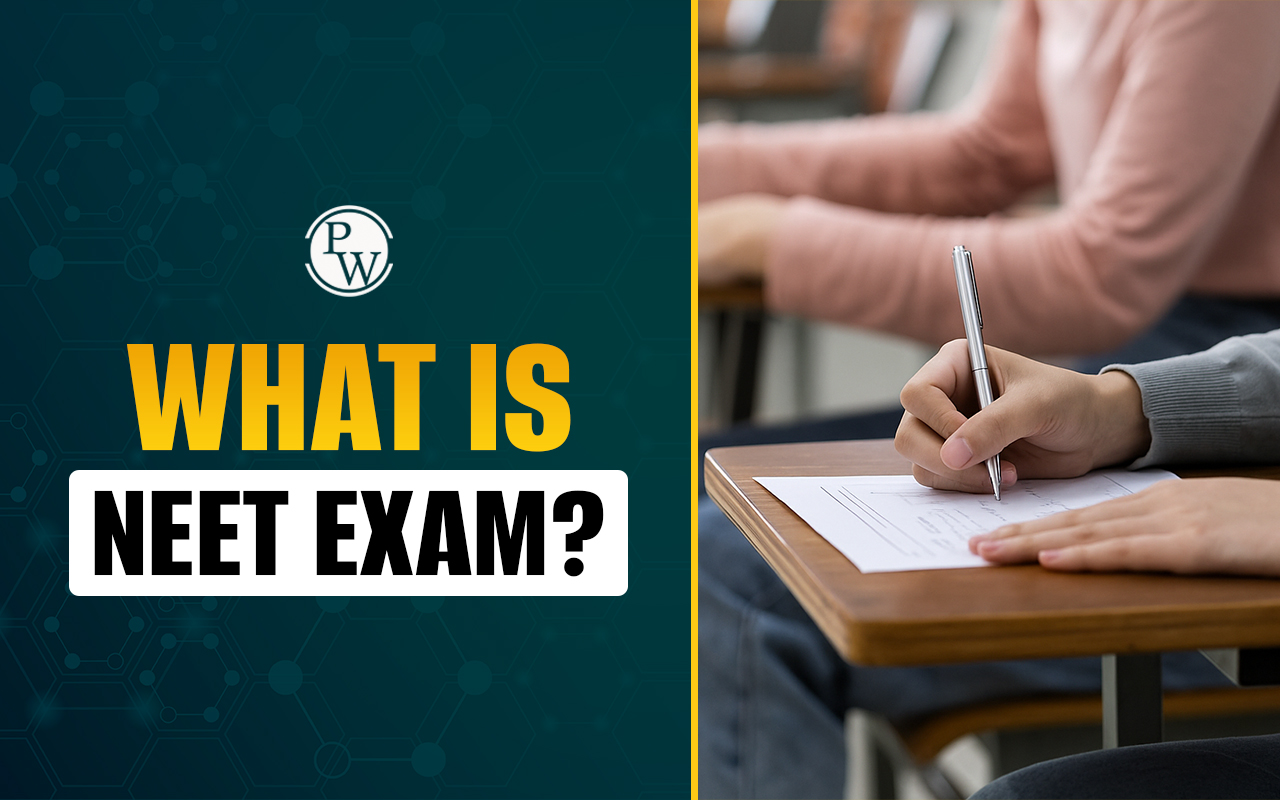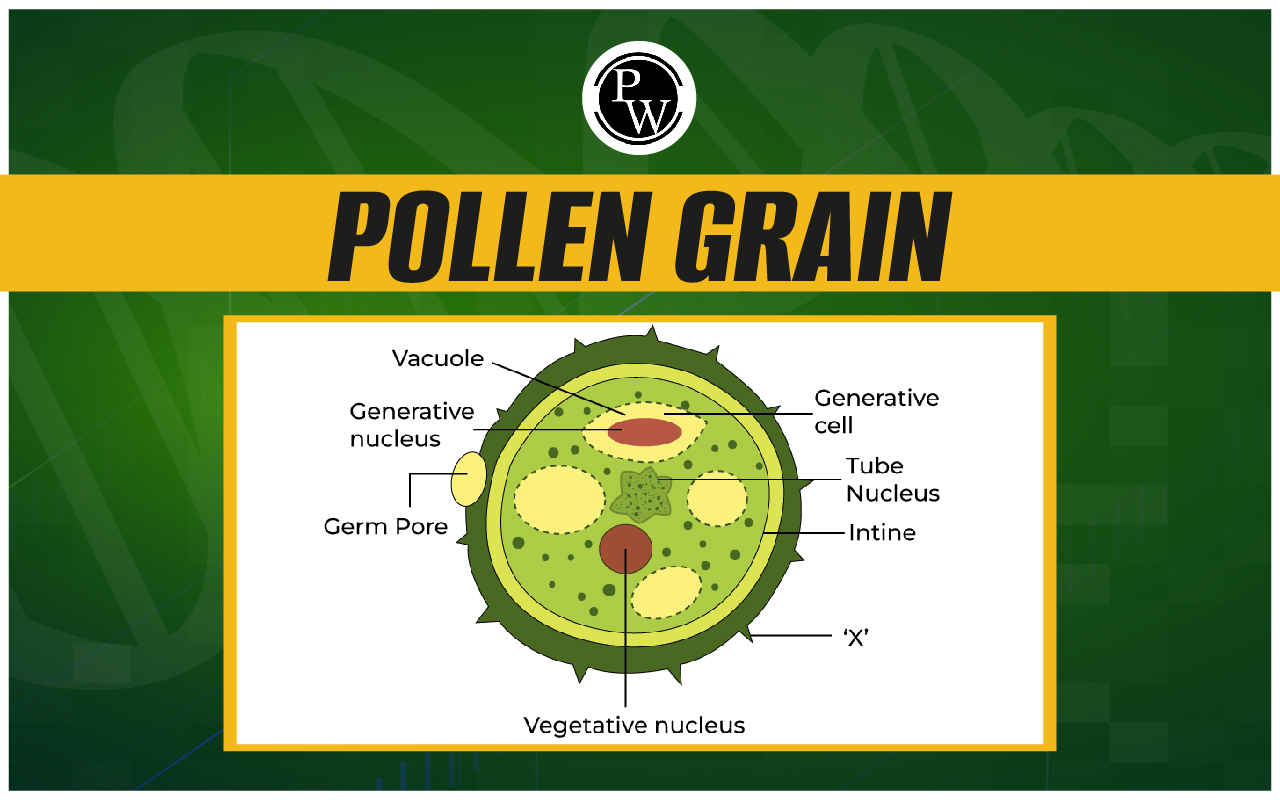
Alcohols, Phenols and Ethers MCQs: To excel in NEET, it is important to focus on Alcohols, Phenols, and Ethers MCQs. For Class 12 students, mastering Alcohols, Phenols and Ethers MCQs is important for both board exams and NEET preparation, as they are a significant part of the NEET Chemistry syllabus . Regular practice will improve your understanding and problem-solving skills, and reviewing past NEET questions can provide insights into the exam format and question types.
Practicing Alcohols, Phenols, and Ethers MCQs with answers helps in understanding key concepts and identifying mistakes. This method enhances learning and builds confidence, as immediate feedback clarifies complex topics. Students can find and practice Alcohols, Phenols, and Ethers MCQs with answers for NEET in the article below.Alcohols, Phenols and Ethers MCQs For NEET
Alcohols, Phenols, and Ethers MCQs For NEET To excel in NEET, focusing on Alcohols, Phenols, and Ethers MCQs is essential. These MCQs often cover key concepts such as reactions and properties of these compounds, including oxidation and esterification. Regularly practicing these questions enhances your understanding and problem-solving skills. Familiarity with the types of MCQs commonly asked can improve your exam strategy and performance. It’s also beneficial to review past NEET questions to gain insights into the NEET chemistry exam format and question types.Also Check:
Alcohols, Phenols and Ethers MCQs Class 12
Alcohols, Phenols, and Ethers MCQs Class 12 For Class 12 students, mastering Alcohols, Phenols, and Ethers is important for both board exams and NEET preparation. This topic is included in the NEET Chemistry syllabus and is essential for the NEET chemistry chapter-wise weightage . Start by studying the fundamental concepts related to these compounds. Regular practice with Class 12 MCQs on Alcohols, Phenols, and Ethers will improve your accuracy and speed. Utilizing class notes and textbooks will strengthen these concepts, helping you become proficient in answering related questions and enhancing your overall exam readiness.
Alcohols, Phenols and Ethers MCQs with Answer
Solving Alcohols, Phenols, and Ethers MCQs with answers provides immediate feedback and is beneficial for NEET preparation. Reviewing the answers helps you understand the correct application of concepts from the NEET Chemistry syllabus and identify areas where you might need improvement. This approach not only reinforces your learning but also boosts your confidence and preparation. Detailed solutions clarify complex concepts and are essential for effectively preparing for the NEET exam.Q 1. Sorbitol is an alcohol which is;
(1) monohydric. (2) trihydric. (3) dihydric. (4) hexahydric.Ans. 4
Q 2. Which of the following is a dihydric alcohol?
(1) Allyl alcohol (2) Glycerine (3) Glycerol (4) Propylene glycolAns. 4
Q 3. 2,4-dimethyl-3-pentanol is a;
(1) primary alcohol. (2) secondary alcohol. (3) tertiary alcohol. (4) dihydric alcohol.Ans. 2
Q 4. Assertion (A): The bond angle in ethers is slightly less than the tetrahedral angle.
Reason (R): There is a repulsion between the two bulky (–R) groups.
(1) Both Assertion (A) and Reason (R) are true and Reason (R) is the correct explanation of the Assertion (A). (2) Both Assertion (A) and Reason (R) are true but Reason (R) is not the correct explanation of the Assertion (A). (3) Assertion (A) is true and Reason (R) is false. (4) Assertion (A) is false and Reason (R) is true.Ans. 4
Q 5. What is the C─O─H bond angle in phenol?
(1) 108.5° (2) 109° (3) 108° (4) 111.7°Ans. 2
Q 6. The only primary alcohol that can be prepared by the indirect hydration of alkenes is;
(1) ethyl alcohol. (2) methyl alcohol. (3) isopropyl alcohol. (4) isobutyl alcohol.Ans. 1
Q 7. The process of converting alkyl halides into alcohols involves ________ (NCERT Exemplar)
(1) addition reaction. (2) substitution reaction. (3) dehydrohalogenation reaction. (4) rearrangement reaction.Ans. 2
Q 8. A tertiary alcohol is obtained when the Grignard reagent reacts with;
(1) pentanone. (2) butanone. (3) propanone. (4) All of theseAns. 4
Q 9. Reaction between acetone and methyl magnesium chloride followed by hydrolysis will give; (2020)
(1) sec. butyl alcohol. (2) tert. butyl alcohol. (3) isobutyl alcohol. (4) isopropyl alcohol.Ans. 2
Q 10. Which of the following Grignard reagents is suitable for the preparation of 3-methyl-2-butanol?
(1) 2-Butanone + methyl magnesium bromide (2) Acetone + ethyl magnesium bromide (3) Acetaldehyde + isopropyl magnesium bromide (4) Ethyl propionate + methyl magnesium bromideAns. 3
Q 11. Which of the following reagents, when treated with phenyl magnesium bromide followed by acid workup, will yield 2-phenylethanol?
(1) Ethanol (2) Oxirane (3) Acetaldehyde (4) EthyleneAns. 2
Q 12. Which statement is not correct about alcohol?
(1) Molecular weight of methanol is higher than water. (2) Alcohol having less no. of carbon atoms is less soluble in water than alcohol having more no. of carbon atoms. (3) Alcohol evaporates at a much faster rate compared with water. (4) All of theseAns. 2
Q 13. As the alkyl part goes on increasing in alcohol, the solubility of alcohol in water;
(1) goes on increasing. (2) decreases. (3) remains unchanged. (4) may increase or decrease.Ans. 2
Q 14. When alcohol is dissolved in water, it is accompanied by;
(1) absorption of heat and contraction in volume. (2) evolution of heat and contraction in volume. (3) absorption of heat and increase in volume. (4) evolution of heat and increase in volume.Ans. 4
Q 15. Solubility of alcohol in water increases with;
(1) increase in molecular mass. (2) increase in size of alkyl group. (3) decrease in molecular mass. (4) None of theseAns. 3
Q 16. Which of the following alcohols have lowest boiling point?
(1) n-butyl alcohol (2) Sec-butyl alcohol (3) Tert-butyl alcohol (4) 2-pentanolAns. 3
Q 17. The increasing order of the boiling point of alcohol is;
(1) primary > secondary > tertiary. (2) tertiary < primary < secondary. (3) tertiary > secondary < primary. (4) primary = secondary = tertiary.Ans. 1
Q 18. If we increase the molecular mass of alcohol, its solubility in water will;
(1) increase. (2) decrease. (3) no change. (4) cannot be predictedAns. 2
Q 19. Alcohols boil at a higher temperature compared to alkanes and other compounds of similar molecular weights because;
(1) of the presence of many isomers. (2) of the presence of hydrogen bond, which cause association of the molecules, raises the molecular weight and reduces the volatility. (3) Both (1) and (2) (4) None of theseAns. 2
Q 20. The boiling point of alcohol is much higher than alkane due to;
(1) intermolecular hydrogen bonding. (2) volatile nature. (3) presence of intramolecular hydrogen bonding. (4) None of theseAns. 1
Q 21. Arrange the following compounds in increasing order of boiling point. Propan-1-ol, butan-1-ol, butan-2-ol, pentan-1-ol (NCERT Exemplar)
(1) Propan-1-ol, butan-2-ol, butan-1-ol, pentan-1-ol (2) Propan-1-ol, butan-1-ol, butan-2-ol, pentan-1-ol (3) Pentan-1-ol, butan-2-ol, butan-1-ol, propan-1-ol (4) Pentan-1-ol, butan-1-ol, butan-2-ol, propan-1-olAns. 1
Q 22. Alcohols of high molecular masses are;
(1) soluble in water. (2) soluble in water on heating. (3) insoluble in all solvents. (4) insoluble in water.Ans. 4
Q 23. Statement-I: Solubility of n-alcohol in water decreases with an increase in molecular weight.
Statement II: The reactive proportion of the hydrocarbon part in alcohols increases with increasing molecular weight which permits enhanced hydrogen bonding with water.
(1) Statement-I and Statement-II both are correct. (2) Statement I is correct but Statement II is incorrect. (3) Statement I is incorrect but Statement II is correct. (4) Statement-I and Statement-II both are incorrect.Ans. 2
Q 24. Assertion (A): Cyclohexanol is more soluble in water than 1-hexanol.
Reason (R): The –OH group of cyclohexanol is more exposed and is more available for hydrogen bonding with water.
(1) Both Assertion (A) and Reason (R) are true and Reason (R) is the correct explanation of Assertion (A). (2) Both Assertion (A) and Reason (R) are true but Reason (R) is not the correct explanation of Assertion (A). (3) Assertion (A) is true and Reason (R) is false. (4) Assertion (A) is false and Reason (R) is true.Ans. 1
Q 25. The waxy substances are;
(1) lower members of alcohol. (2) higher members of alcohols. (3) lower members of aldehydes. (4) higher members of aldehydes.Ans. 2
Q 26. The boiling point of glycerol is more than propanol because of;
(1) hydrogen bonding. (2) hybridization. (3) arrangement of molecules. (4) size of molecule.Ans.1
Q 27. Which of the following are correct statement(s)?
(I) The Polar nature of O–H bond is responsible for the acidic character of alcohols.
(II) Acidic strength of alcohols follows the order 1° > 2° > 3°.
(III) Lower alcohols are insoluble in water.
(IV) Alcohols also react as Bronsted base.
(1) (I), (II) and (III) (2) (I), (II), and (IV) (3) (II), (III) and (IV) (4) (I), (III) and (IV)Ans. 2
Q 28. ClCH2CH2OH is a stronger acid than CH3CH2OH because;
(1) –I effect of Cl increases the negative charge of the O atom of alcohol. (2) –I effect of Cl disperses the negative charge of the O atom to produce a more stable cation. (3) –I effect of Cl disperses the negative charge of the O atom to produce a more stable anion. (4) None of theseAns. 3
Q 29. The order of reactivity of methyl alcohol (I), isopropyl alcohol (II), tertiary butyl alcohol (III), and ethyl alcohol (IV) for esterification in decreasing order will be;
(1) I > II > III > IV (2) IV > III > II > I (3) I > IV > II > III (4) I > IV > III > IIAns. 3
Q 30. Assertion (A): Esterification is a process in which a sweet-smelling substance is produced.
Reason (R): When esters react with sodium hydroxide, an alcohol and sodium salt of carboxylic acid are obtained.
(1) Both Assertion (A) and Reason (R) are true and Reason (R) is the correct explanation of Assertion (A). (2) Both Assertion (A) and Reason (R) are true but Reason (R) is not the correct explanation of Assertion (A). (3) Assertion (A) is true and Reason (R) is false. (4) Assertion (A) is false and Reason (R) is true.Ans. 2
Q 31. The reaction between an alcohol and an acid with elimination of a water molecule is called;
(1) etherification. (2) saponification. (3) elimination. (4) esterification.Ans. 4
Q 32. When ethyl alcohol reacts with acetic acid, the products formed are;
(1) sodium ethoxide + hydrogen. (2) ethyl acetate + water. (3) ethyl acetate + soap. (4) ethyl alcohol + water.Ans. 2
Q 33. Statement-I: Esterification of alcohol involves cleavage of the O–H bond in alcohols.
Statement II: Alcohols liberate hydrogen gas in reaction with metallic sodium.
(1) Statement-I and Statement-II both are correct. (2) Statement I is correct but Statement II is incorrect. (3) Statement I is incorrect but Statement II is correct. (4) Statement-I and Statement-II both are incorrect.Ans. 1
Q 34. In esterification of an acid, the other reagent is;
(1) aldehyde. (2) alcohol. (3) amine. (4) water.Ans. 2
Q 35. Tertiary alcohols are resistant to oxidation;
(1) due to large +I effect of alkyl group. (2) because they do not have alpha-hydrogen atom. (3) due to greater steric hindrance. (4) All of theseAns. 4
Q 36. Which of the following compounds is not oxidized by pyridinium chlorochromate (PCC)?
(1) 2-methyl-2-butanol (2) 1-pentanol (3) 2-pentanol (4) 1,3-propanediolAns. 1
Q 37. By oxidation which alcohol do we get ketone? (2015)
(1) Ethanol (2) Methanol (3) Propan-1-ol (4) Propan-2-olAns. 4
Q 38. What is the product formed when ethyl alcohol is treated with PCC?
(1) Acetic acid (2) Acetaldehyde (3) Ethyl acetate (4) Dimethyl etherAns. 2
Q 39. Primary alcohols on action of copper gives;
(1) aldehydes. (2) ketones. (3) carboxylic acids. (4) All of theseAns. 1
Q 40. Isopropyl alcohol is heated at 300°C with a copper catalyst to form;
(1) acetone. (2) dimethyl ether. (3) acetaldehyde. (4) ethane.Ans. 1
Q 41. When vapours of a secondary alcohol is passed over heated copper at 573 K, the product formed is;
(1) a carboxylic acid. (2) an aldehyde. (3) a ketone. (4) an alkene.Ans. 3
Q 42. What happens when tertiary butyl alcohol is passed over heated copper at 300°C?
(1) Secondary butyl alcohol is formed. (2) 2-Methylpropene is formed. (3) Butanal is formed. (4) 1-Butene is formed.Ans. 2
Q 43. Tertiary alcohols when passed over heated copper undergo ______ to form ______.
(1) dimerization, ether (2) dehydration, Cu complex (3) dehydration, alkene (4) None of theseAns. 3
Q 44. Which of the following is responsible for iodoform reaction?
(1) Formalin (2) Methanol (3) Acetic acid (4) EthanolAns. 4
Q 45. Statement-I: Result of Victor Mayer test
1° ROH → Red colour
2° ROH → Blue colour
3° ROH → White or no colour
Statement-II: The Victor Mayer test is a method of distinguishing 1°, 2° and 3° alcohol.
(1) Statement-I and Statement-II both are correct. (2) Statement-I is correct but Statement-II is incorrect. (3) Statement-I is incorrect but Statement-II is correct. (4) Statement-I and Statement-II both are incorrect.Ans. 1
Q 46. Which of the following is an example of trihydric phenol?
(1) Catechol (2) Quinol (3) Pyrogallol (4) CresolAns. 3
Q 47. A compound, in which the –OH group is directly attached to the carbon atom of the benzene ring is called;
(1) alcohol. (2) phenol. (3) haloalkane. (4) haloarene.Ans. 2
Q 48. Phenols are hydroxy compounds of;
(1) alkane (2) alkene (3) benzene (4) alkyneAns. 3
Q 49. Aromatic monohydroxy compound is called;
(1) alcohol. (2) carbolic acid. (3) benzol. (4) benzyl alcohol.Ans. 2
Q 50. When chlorobenzene is heated under pressure at the ________ temperature during Dow’s process, phenol is obtained.
(1) 323 K (2) 523 K (3) 623 K (4) 423 KAns. 3
Q 51. Benzene diazonium chloride on boiling with dilute sulphuric acid gives;
(1) benzoic acid. (2) benzene. (3) toluene. (4) phenol.Ans. 4
Q 52. Sodium salt of benzene sulphonic acid on fusion with caustic soda and followed by treatement with HCl gives;
(1) acetic acid. (2) cumene. (3) phenol. (4) picric acid.Ans. 3
Q 53. In preparation of phenol from cumene, the important product obtained are;
(1) ethanal. (2) ethanol. (3) acetaldehyde. (4) acetone.Ans. 4
Q 54. Cumene hydroperoxide on decomposition by dilute acid gives a mixture of;
(1) phenol and acetaldehyde. (2) phenol and acetone. (3) phenol and water. (4) phenol and ethyl alcohol.Ans. 2
Q 55. Phenol can be obtained from the following compounds;
(1) Cumene (2) iso-Propyl benzene (3) 2-Phenyl propane (4) All of theseAns. 4
Q 56. Cumene on air oxidation forms;
(1) cumene hydroperoxide. (2) benzoic acid. (3) isopropyl benzene. (4) phenol.Ans. 1
Q 57. Phenols and alcohols both have the same –OH group but still phenols are sparingly soluble in water. This is because;
(1) they have high molecular mass. (2) they have a non-polar aryl group. (3) they ionize readily to form more stable phenoxide ion. (4) they have high boiling points.Ans. 2
Q 58. Choose the incorrect statement among following.
(1) The properties of phenol are chiefly due to the interaction of hydroxyl group with aromatic ring. (2) The –OH group in phenol is involved in intra- molecular hydrogen bonding. (3) Phenol is sparingly soluble in water. (4) The boiling points of phenols is higher than haloarenes of comparable molecular mass.Ans. 2
Q 59. For phenol, which of the following statements is correct?
(1) It is insoluble in water. (2) It has higher boiling point than toluene. (3) It does not shows acidic property. (4) It has lower melting point compared to aromatic hydrocarbons of comparable molecular weight.Ans. 2
Q 60. Assertion (A): Phenol is solid at room temperature.
Reason (R): Phenol has intermolecular hydrogen bonding.
(1) Both Assertion (A) and Reason (R) are true and Reason (R) is the correct explanation of Assertion (A). (2) Both Assertion (A) and Reason (R) are true but Reason (R) is not the correct explanation of Assertion (A). (3) Assertion (A) is true and Reason (R) is false. (4) Assertion (A) is false and Reason (R) is true.Ans. 4
Q 61. Assertion (A): o-Nitrophenol is less soluble in water than the m-and p-isomers.
Reason (R): m- and p-Nitrophenols exist as associated molecules.
(1) Both Assertion (A) and Reason (R) are true and Reason (R) is the correct explanation of Assertion (A). (2) Both Assertion (A) and Reason (R) are true but Reason (R) is not the correct explanation of Assertion (A). (3) Assertion (A) is true and Reason (R) is false. (4) Assertion (A) is false and Reason (R) is true.Ans. 2
Q 62. Assertion (A): o- and p-Nitrophenols can be separated by steam distillation.
Reason (R): o-Nitrophenol exhibits intramolecular hydrogen bonding while p-Nitrophenol exist as associated molecules.
(1) Both Assertion (A) and Reason (R) are true and Reason (R) is the correct explanation of Assertion (A). (2) Both Assertion (A) and Reason (R) are true but Reason (R) is not the correct explanation of Assertion (A). (3) Assertion (A) is true and Reason (R) is false. (4) Assertion (A) is false and Reason (R) is true.Ans. 1
Q 63. o-Nitrophenol is steam volatile, whereas p-nitrophenol is not. This is due to;
(1) the presence of intermolecular H-bonding in o-nitrophenol. (2) the presence of intramolecular H-bonding in o-nitrophenol. (3) the presence of intramolecular H-bonding p-nitrophenol. (4) None of theseAns. 2
Q 64. Statement-I: o-Nitrophenol is steam volatile due to intramolecular hydrogen bonding.
Statement-II: o-Nitrophenol has a high melting point due to hydrogen bonding.
(1) Statement-I and Statement-II both are correct. (2) Statement I is correct but Statement II is incorrect. (3) Statement I is incorrect but Statement II is correct. (4) Statement-I and Statement-II both are incorrect.Ans. 2
Q 65. Which of the following is most acidic?
(1) Benzyl alcohol (2) Cyclohexanol (3) Phenol (4) m-ChlorophenolAns. 4
Q 66. Assertion (A): p-Nitrophenol is more acidic than phenol.
Reason (R): Nitro group helps in the stabilisation of the phenoxide ion by dispersal of negative charge due to resonance.
(1) Both Assertion (A) and Reason (R) are true and Reason (R) is the correct explanation of Assertion (A). (2) Both Assertion (A) and Reason (R) are true but Reason (R) is not the correct explanation of Assertion (A). (3) Assertion (A) is true and Reason (R) is false. (4) Assertion (A) is false and Reason (R) is true.Ans. 1
Q 67. Assertion (A): Phenol is more acidic than ethanol.
Reason (R): Phenoxide ion is more stabilized by resonance than ethoxide ion.
(1) Both Assertion (A) and Reason (R) are true and Reason (R) is the correct explanation of Assertion (A). (2) Both Assertion (A) and Reason (R) are true but Reason (R) is not the correct explanation of Assertion (A). (3) Assertion (A) is true and Reason (R) is false. (4) Assertion (A) is false and Reason (R) is true.Ans. 1
Q 68. Phenol, when it first reacts with concentrated sulphuric acid and then with nitrating mixture, gives;
(1) 2,4,6-trinitrobenzene. (2) o-nitrophenol. (3) p-nitrophenol. (4) nitrobenzene.Ans. 1
Q 69. Statement-I: The acidic strength of monosubstituted nitrophenol is higher than phenol because of the electron withdrawing nitro group.
Statement-II: o-nitrophenol, m-nitrophenol, and p-nitrophenol will have same acidic strength as they have one nitro group attached to the phenolic ring.
(1) Statement-I and Statement-II both are correct. (2) Statement-I is correct but Statement-II is incorrect. (3) Statement-I is incorrect but Statement-II is correct. (4) Statement-I and Statement-II both are incorrect.Ans. 2
Q 70. The boiling point of p-nitrophenol is higher than that of o-nitrophenol because; (1994)
(1) NO2 group at p-position behaves in a different way from that at o-position. (2) intramolecular hydrogen bonding exists in p-nitrophenol. (3) There is intermolecular hydrogen bonding in p-nitrophenol. (4) p-nitrophenol has a higher molecular weight than o-nitrophenol.Ans. 3
Q 71. When phenol is treated with excess of bromine water, it gives; (1992)
(1) m-bromophenol. (2) o- and p-bromophenols. (3) 2,4-dibromophenol. (4) 2,4,6-tribromophenol.Ans. 4
Q 72. Assertion (A): In case of phenol, bromination takes place even in absence of Lewis acid whereas bromination of benzene takes place in presence of Lewis acid like FeBr3.
Reason (R): –OH group attached to benzene ring is highly deactivating.
(1) Both Assertion (A) and Reason (R) are true and Reason (R) is the correct explanation of Assertion (A). (2) Both Assertion (A) and Reason (R) are true but Reason (R) is not the correct explanation of Assertion (A). (3) Assertion (A) is true and Reason (R) is false. (4) Assertion (A) is false and Reason (R) is true.Ans. 3
Q 73. Which of the following reactions confirm the presence of benzene ring in phenol?
(1) Halogenation (2) Sulphonation (3) Nitration (4) All of theseAns. 4
Q 74. Assertion (A): Phenol forms 2,4,6-tribromophenol on treatment with excess bromine water.
Reason (R): 2,4,6-tribromophenol is less soluble in water than phenol.
(1) Both Assertion (A) and Reason (R) are true and Reason (R) is the correct explanation of Assertion (A). (2) Both Assertion (A) and Reason (R) are true but Reason (R) is not the correct explanation of Assertion (A). (3) Assertion (A) is true and Reason (R) is false. (4) Assertion (A) is false and Reason (R) is true.Ans. 2
How to Approach Alcohols, Phenols and Ethers MCQs
The following are some tips for approaching MCQs on Alcohols, Phenols, and Ethers:- Understand Reactions: Know the common reactions involving alcohols, phenols, and ethers, such as dehydration, oxidation, esterification, and Williamson synthesis.
- Analyze the Question: Read each question carefully to identify the key details. Understand what is being asked and what information is provided.
- Practice Regularly: Regular practice with MCQs will help you recognize patterns and apply concepts more effectively.
- Manage Your Time: Practice answering MCQs under timed conditions to improve your speed and accuracy during exams.
- Review Mistakes: Analyze any incorrect answers to understand your errors and avoid repeating them.
- Seek Help: If you have difficulties with any concepts, ask your teacher or classmates for assistance.
- Use Online Resources: Take advantage of Physics Wallah online resources, such as practice tests, quizzes, and interactive classes, to enhance your learning.
Alcohols, Phenols and Ethers MCQs FAQs
Q. What are the key topics for Alcohols, Phenols, and Ethers MCQs for NEET?
Q. What common mistakes should I avoid when answering Alcohols, Phenols, and Ethers MCQs?
Q. How can I assess my preparation level for Alcohols, Phenols, and Ethers MCQs?
Q. How can I identify the correct answer in complex MCQs on Alcohols, Phenols, and Ethers?
Q. What is the role of reaction mechanisms in Alcohols, Phenols, and Ethers MCQs?
Q. How can I use previous exam papers to prepare for Alcohols, Phenols, and Ethers MCQs?










